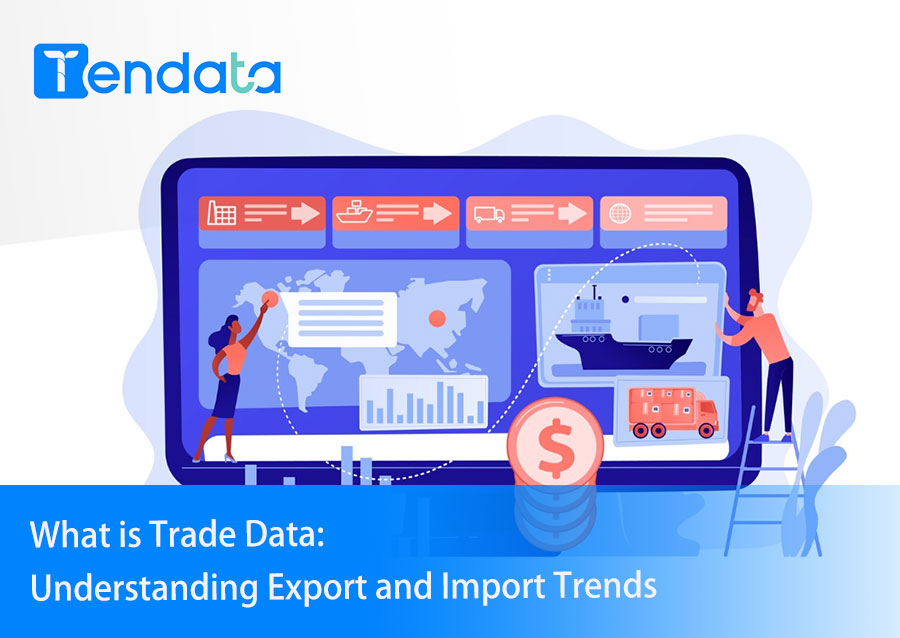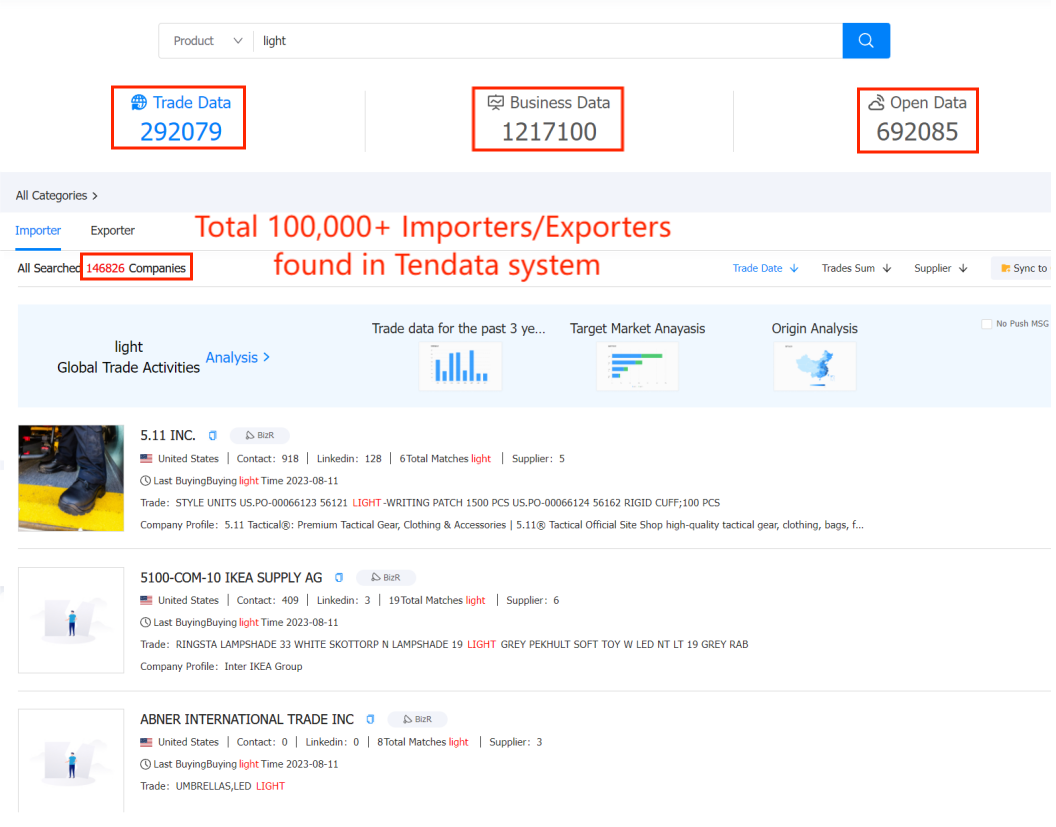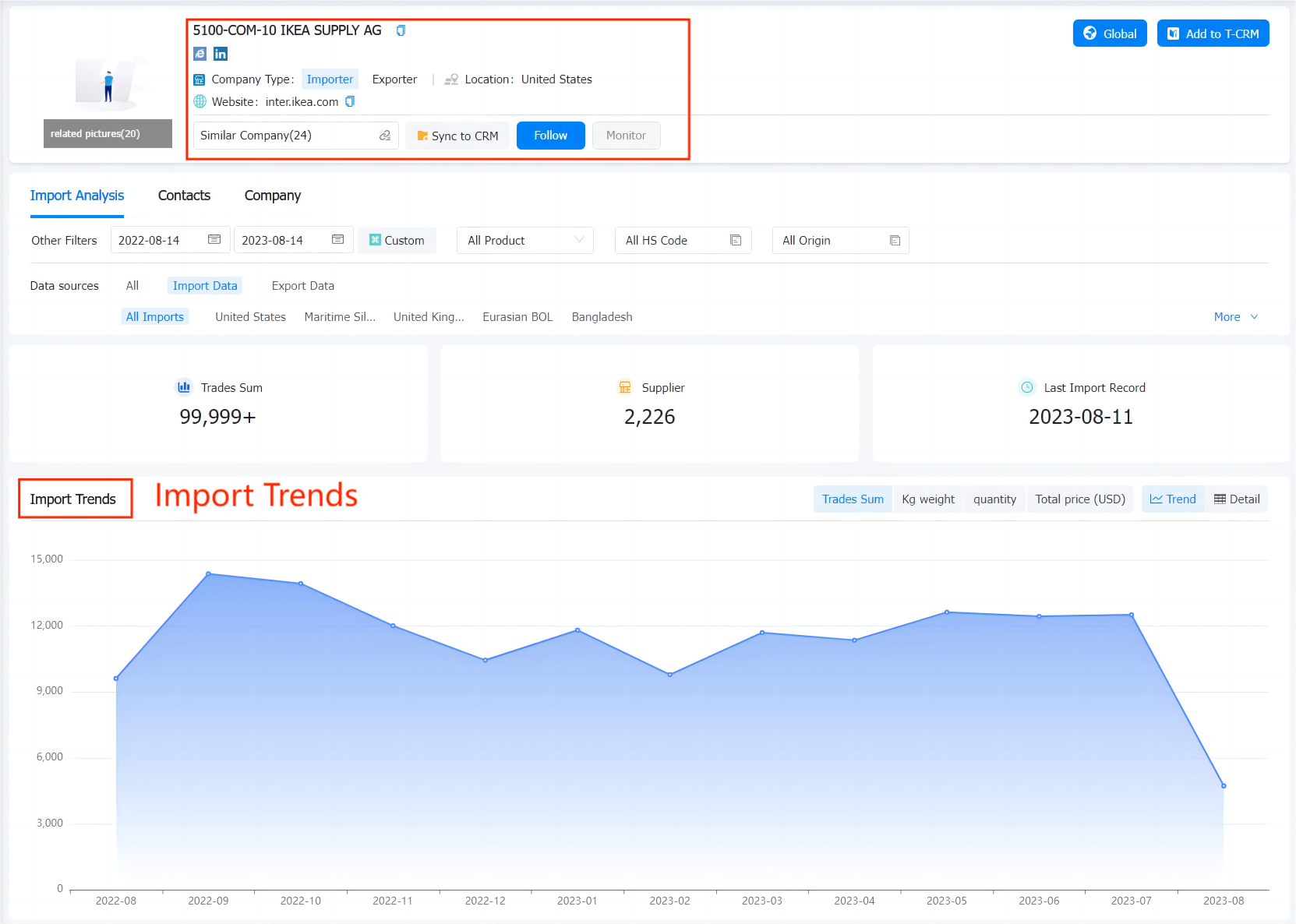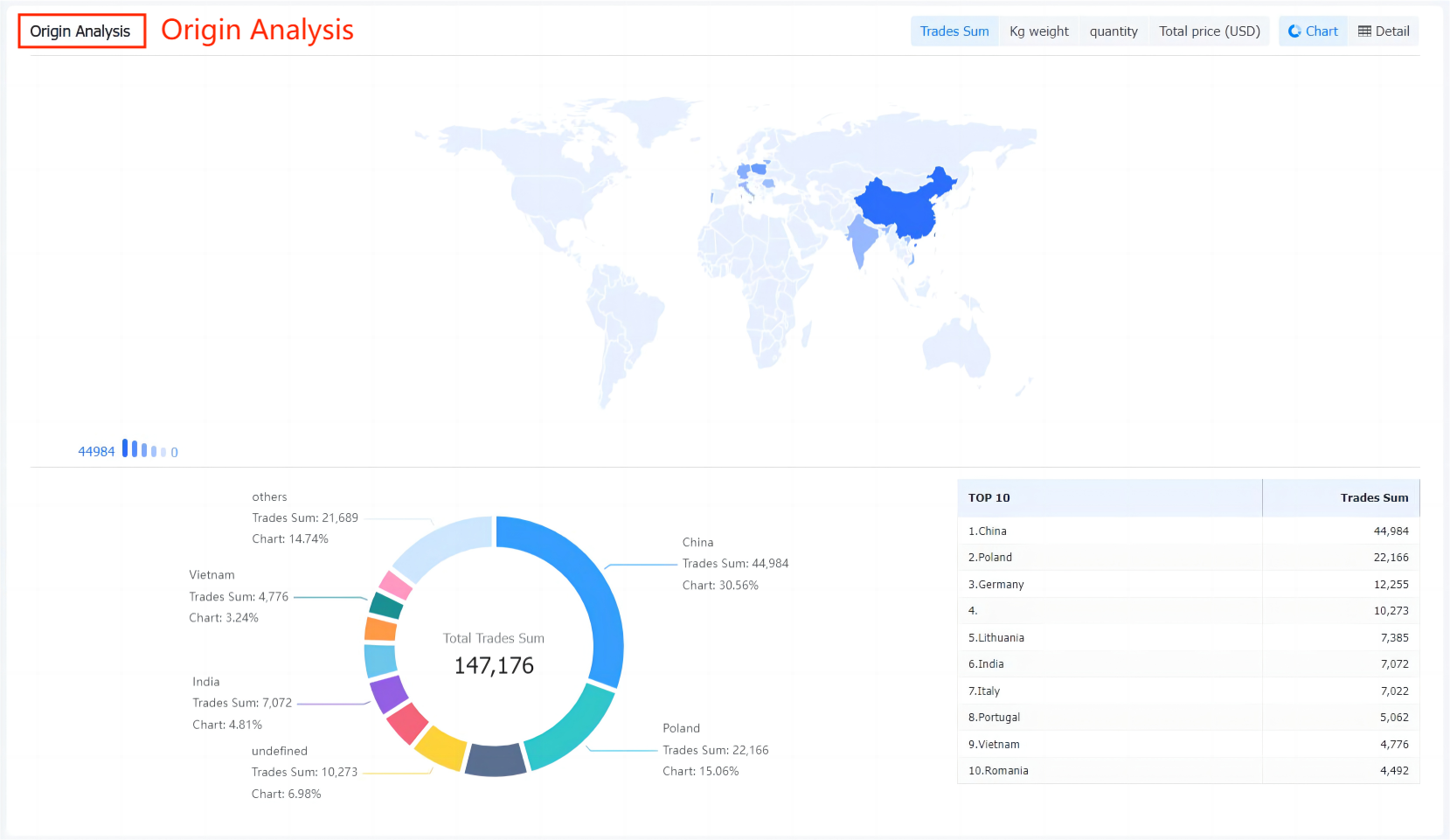 Trade Policy
Trade Policy
 06-11-2023
06-11-2023
Trade data is a crucial aspect of international business that provides
insights into the export and import activities of countries. It encompasses a
wealth of information, from product-specific details to trade volumes and
values. In this article, Tendata will explore the significance of trade data and
delve into the current state of global exports and imports, followed by an
in-depth analysis of trade trends.

The Significance of Trade Data:
Trade data is essential for businesses, policymakers, and economists, as it offers valuable insights into international trade dynamics. It helps in understanding the following aspects:
a. Trade Balance:
Trade data reveals whether a country is exporting more than it imports (a trade surplus) or vice versa (a trade deficit). This balance has a significant impact on a nation's economy and currency value.
b. Market Analysis:
Export and import data can be used to identify potential markets for specific products. By analyzing demand and supply trends, businesses can make informed decisions about their target markets.
c. Economic Indicators:
Trade data is a key economic indicator, reflecting a nation's overall economic health. It can reveal inflationary pressures, growth prospects, and the competitiveness of industries.
d. Policy Formulation:
Governments use trade data to formulate trade policies, negotiate trade agreements, and assess the impact of tariffs and trade restrictions.
e. Supply Chain Management:
Businesses can optimize their supply chains by analyzing trade data, reducing costs, and ensuring efficient delivery of goods.
Current Export and Import Trends:
To understand the current state of global trade, it's important to examine trade data for major players in the global market:
a. China's Dominance:
China has emerged as a global export powerhouse. Its trade data shows significant exports in electronics, machinery, and textiles. The country's consistent trade surplus has given it substantial economic influence.
b. The United States:
The United States has a trade deficit primarily due to its strong demand for consumer goods. Its trade data highlights imports of electronics, clothing, and automobiles.
c. European Union:
The EU is a major player in global trade. Trade data indicates a strong export market for machinery, vehicles, and pharmaceuticals. However, the region also imports significant amounts of energy and raw materials.
d. Developing Economies:
Emerging markets like India and Brazil are experiencing substantial growth in trade. Their trade data reflects increasing exports of software, agricultural products, and minerals.
Strategies for Businesses:
Businesses can leverage trade data to make informed decisions and stay competitive in the global market:
a. Market Research:
Use trade data to identify promising markets and tailor products or services to meet local demands.
b. Risk Management:
Stay alert to potential risks, such as trade restrictions, currency fluctuations, and geopolitical tensions, by monitoring trade data.
c. Supply Chain Optimization:
Analyze trade data to streamline supply chain operations, reduce costs, and improve delivery efficiency.
d. Sustainability Initiatives:
Consider responsible sourcing and sustainable practices based on insights from trade data to meet consumer demands.
e. Strategic Alliances:
Collaborate with partners in countries with strong trade connections to diversify and expand your business network.
Conclusion:
Trade data is a goldmine of information for businesses and governments. Understanding current export and import trends, emerging challenges, and the strategies to harness this data is essential for success in the global market. By staying informed and making data-driven decisions, businesses can navigate the dynamic world of international trade with confidence and success.
Market analysis involves assessing the positioning of competitors' existing products in conjunction with an enterprise's own advantages. This analysis informs the development of strategies aimed at creating a distinct and profound impression on customers, ultimately increasing the likelihood of customer acquisition. (>>> Click here to INITIATE MARKET ANALYSIS)
The Tendata platform seamlessly integrates three pivotal data sets to furnish comprehensive support for export-oriented enterprises:

1. Tendata Trade Data: This encompasses market research, product forecasting, customer development, customer retention, industry monitoring, and price anchoring.

2. Tendata Business Data: This facet involves delving into enterprise specifics, evaluating business reputation, financial standing, partner identification, risk assessment, and industry reports.


3. Tendata Open Data: With this feature, users can access global enterprise product information, precisely pinpoint company details, and access an expansive array of contact information (including key personnel and their roles, phone numbers, official website links, email addresses, and office locations). Additionally, it extends connectivity to major global social media platforms such as LinkedIn, Facebook, and Twitter. (>>>> Click here to REQUEST A FREE DEMO)

>>>> Click here to SEEK CONSULTATION<<<
Category
Leave Message for Demo Request or Questions


 T-info
T-info T-discovery
T-discovery

 My
Tendata
My
Tendata Market Analysis
Market Analysis Customer
Development
Customer
Development Competitor
Monitoring
Competitor
Monitoring Customer Relationship
Customer Relationship





































































































































